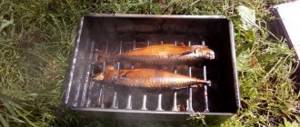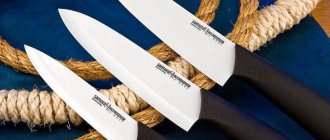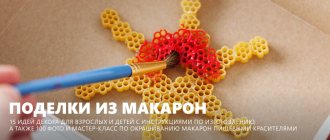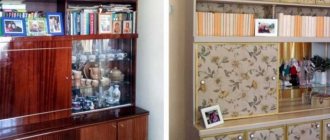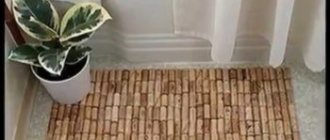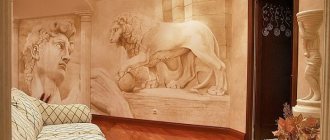Many people are impressed by jewelry and cold porcelain products. It’s not difficult to make such beauty with your own hands, but in most cases, many are stopped by the high price of the material. However, this is not a reason to abandon such an interesting direction in needlework. Cold porcelain can be made with your own hands. You don’t have to spend a lot of money, time and effort to do this. The main thing is to purchase the necessary components, most of which are found in every home, and then mix everything in the correct proportions.
Interesting information
This material is also called porcelain (from the English porcelain, which means “porcelain”). It was invented at the beginning of the twentieth century in Argentina. It got its name because when it dries it looks like real porcelain. Unlike polymer clay, which is sold in craft stores, cold porcelain is made independently from the most affordable ingredients, and this is its main advantage.
It is no worse than purchased modeling material, as it is unusually plastic and pliable. After drying, the material becomes as hard as polymer clay, but unlike it, it is not toxic. Therefore, both adults and children can work with it.
The main ingredient of this material is starch . You can use any, but the most suitable are rice and corn, as well as a mixture of them in a one-to-one ratio. The molecules that make up starch are natural polymers.
Rules for using cold porcelain
In order for the finished product to last really long, you should add a little citric acid to the starting material. In this case, homemade cold porcelain will last a long time. However, some craftswomen still have problems with their products. Most often they occur when ingredients are used incorrectly.
Advice! Experienced needlewomen strongly do not recommend placing finished material or products in the cold, because... this will have a detrimental effect on the workpiece. This applies even to those products that have already dried out for a long time and are being successfully used. Humidity will negatively affect the condition of the mass and the decoration will fall apart.
Cooked porcelain should not be stored for a long time. After all the components are connected, you should wait only 15 minutes and you can start working. Under no circumstances should you put the mixture in the refrigerator. At room temperature, its properties necessary for high-quality modeling will last no more than 2 hours. After this, you should not try to sculpt anything from cold porcelain, as it will be too dry.
Cold porcelain should be used within 24 hours
In order not to waste material in vain, you should clearly calculate the amount of prepared base that will be used at a time. This will allow you to use components economically.
Tips for working with the material
Cold porcelain has its own characteristics that must be taken into account. It is important to know that it is sensitive to sudden changes in temperature. It should not be placed in the refrigerator, as it will simply become unusable. Storage requires room temperature .
After the modeling material is ready, it should be stored wrapped in plastic wrap at room temperature. Before placing the porcelain in film, it is advisable to lubricate it with baby or sunflower oil. The film will prevent chapping and drying out of the material, and the oil will protect against fungus. Once a day you need to change the bag and remove moisture .
Drying the product
After completing all work, it is important to properly dry the product. Depending on the size of the structure, the period of complete drying ranges from 1 to 7 days. If you need the product urgently, you can dry it in the microwave at minimum temperature. After the product has completely dried, it will shrink slightly in size - this should be taken into account when sculpting.
When sculpting products from this material, people who suffer from joint and bone diseases receive great benefit. When sculpting a warm mass, pain in the hands decreases, blood circulation improves, and helps with exacerbation of arthritis and arthrosis. And also, when working with small parts, fine motor skills of the hands improve, which also undoubtedly has a positive effect on brain activity and the nervous system.
Features of finished products
Crafts require proper storage.
The material is a type of polymer clay that has the ability to absorb moisture and lose color when exposed to the sun. Therefore, products should be protected from moisture and direct sunlight. Products should not be kept in rooms where the temperature is below ten degrees. Excessively high temperatures also have a destructive effect on the material. If you coat products with varnish, you can protect them from moisture and cracking.
Making jewelry from cold porcelain
Cold porcelain makes excellent jewelry. But they must be used carefully. Porcelain material, even in a finished and varnished state, can deteriorate from moisture and sunlight. Therefore, it is not recommended to wear such jewelry during the daytime in the summer, much less wear it to the beach. But as a complement to the look for a party or carnival, jewelry made from cold porcelain is ideal.
Cold porcelain makes wonderful jewelry
Cold porcelain can be rolled out into a thin layer, because of this property it produces gorgeous flower petals. The big advantage of this material is that it is very convenient to make even small elements from it. Those who have ever picked up plasticine will definitely be able to handle cold porcelain.
Advice! It is very important not to forget to properly process finished products. In order for the jewelry to last for a long time, you should use a clear varnish.
Cooking recipes
There are many different recipes for preparing this modeling material. After its invention, many attempts were made to improve it and make it more convenient. This mass contains glue, glycerin and oil, instead of which in recent years craftsmen have advised adding regular body or hand cream. Experiments with different types of glue are still ongoing.
Classic way
To make the modeling mass, you will need a glass of PVA glue, a glass of corn starch, 1 tablespoon of glycerin, 1 tablespoon of hand cream, preferably thicker, and 1 teaspoon of citric acid.
If desired, you can add flavoring. All ingredients should be combined in a glass saucepan and stirred thoroughly until smooth. Now you need to put it on low heat and constantly stir the mixture with a wooden spatula. Gradually, lumps begin to appear and the mixture thickens, gathering into a large lump. After the mass thickens well and the lump begins to stick away from the spatula, you can turn off the heat and place it on the board.
The mass should be kneaded well. Palms can be lubricated with cream. You should get an elastic, homogeneous lump of dough.
Recipe without cooking
This recipe allows you to make modeling material without cooking. To prepare, you will need some wallpaper glue, which must contain modified starch. This is a requirement. For example, you can use Moment Classic wallpaper glue. You will also need some baking soda, water, glycerin or petroleum jelly and some dishwashing detergent.
Cooking process
The no-cook recipe is quite simple. Take a deep container in which you will mix all the elements. Pour 2 tablespoons of starch and 1 tablespoon of Vaseline into it. Mix the resulting mixture thoroughly and add a quarter teaspoon of soda and a few drops of glycerin. Continue stirring the ingredients. Next comes the final stage - adding glue. PVA will hold the mass together, so you should mix it carefully. Unfortunately, it is difficult to say exactly how much glue is required; here you need to use your eye. After this, knead the mass with your hands. As a result, you should end up with a lump of cold porcelain.
To prevent the mixture from sticking to your hands, lubricate them with cream. This will not only help you form the mixture comfortably, but will also protect your hands from possible irritation.
If you went a little overboard with the glue and the mass is too sticky, add a little dishwashing liquid to it. This will reduce the excessive stickiness of the cold porcelain.
If you want to make the mass colored, then during the final stirring you can add paint: acrylic, oil or food paint (in the photo you can see how porcelain is painted). Stir the mixture thoroughly until the porcelain is evenly colored.
Related article: DIY birthday gift for dad with photos and videos
Do not allow water to enter during the preparation process, as the glue already contains it. Excess water will cause the product to quickly become moldy.
Advantages and disadvantages of the recipe
This recipe has some undeniable advantages. Cold porcelain without cooking is very easy to prepare and is difficult to spoil. Boiled porcelain or cooked in the microwave is easy to overheat. If you thoroughly mixed the mixture during the process and the quality of the products used is high, you will get beautiful cold porcelain from which you can make wonderful crafts. But there is also a significant drawback: material prepared in this way deteriorates very quickly. In just three weeks it will begin to dry out and crack or become moldy.
Master classes on modeling
On the Internet you can find a large number of different ideas for creating costume jewelry, figurines, realistic flowers and much more. A handmade gift is a pleasure to give to a loved one. Such an original gift will definitely be liked and remembered for a long time .
New Year's ball
New Year's crafts made from cold porcelain for beginners are not particularly difficult and can serve as wonderful gifts. To make a Christmas tree ball you will need the following materials:
- PVA glue;
- scissors;
- foil;
- clear nail polish;
- paper napkin with a beautiful thematic pattern;
- narrow satin ribbons that match the color of the selected pattern on the napkin.
Making roses and freesias
And now a small master class for crafts made from cold porcelain. This material is good not only because its ingredients are cheap and available, but also because it is easy to sculpt, which even a beginner can handle. Even very small parts can be sculpted from porcelain, like small jewelry or beads.
To make a bouquet of roses or freesias you need the following tools:
- Super glue.
- Base for hairpins, stacks and shapes.
- Porcelain (green, lilac, yellow).
- Napkins, gloves and rolling pin.
The actual process of making a cold porcelain product with your own hands begins with a plan: you need to imagine or draw the future composition. When making a hairpin, you can come up with any bouquet. You need to be careful with earrings, because asymmetry will greatly spoil the picture.
Freesias are very easy to make. They come in pink, lilac or white. The first step is to make a small ball, from which a drop is then formed. Then you need to divide the thick part of the drop into two parts, and then divide the rest. This is how a flower on a stem is made. The petals need to be smoothed out, and the stamens can be inserted inside the flower to give it a natural look. Several such flowers need to be made.
